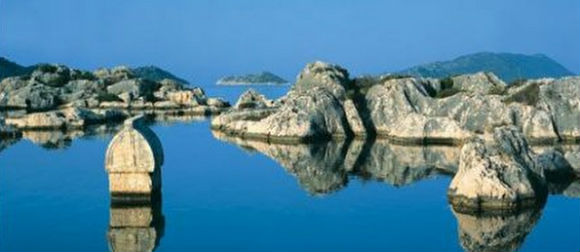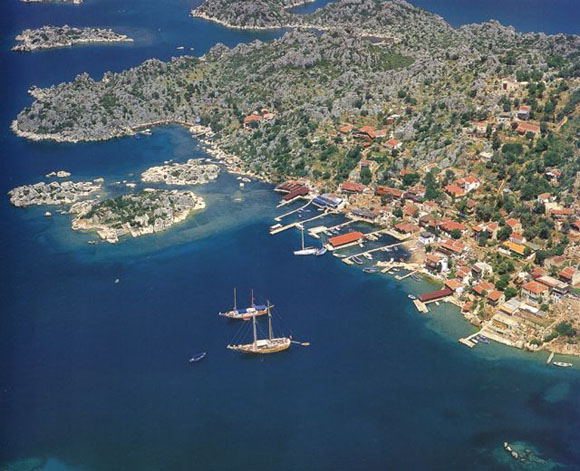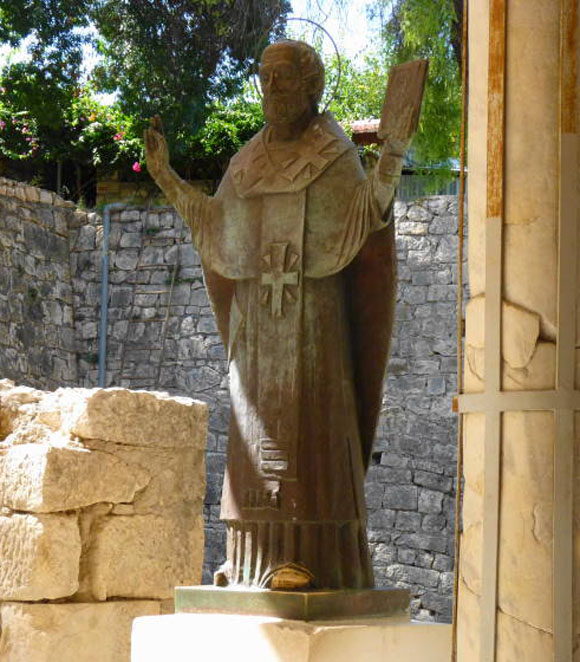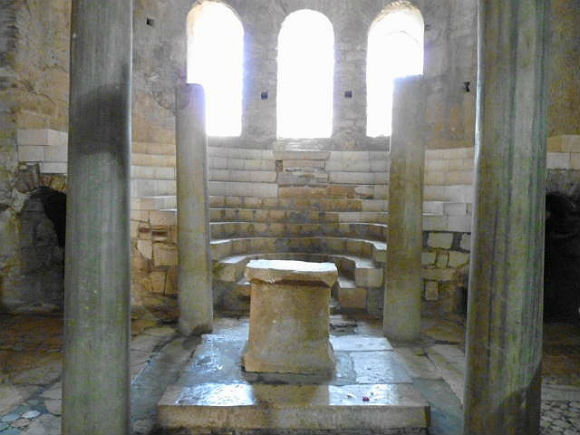The hometown of the man who inspired the legend of Santa Claus is a long way from the snow and arctic lights of the North Pole.
The land Saint Nicholas is originally from rarely sees snowflakes it is a village of palm trees and orange groves on the Mediterranean Sea in what is modern day Turkey. Nicholas, patron saint of sailors and children, lived and died there nearly 18 centuries ago.
The legend of the 4th century bishop who gave gifts to the poor has spread since the earliest days of Christianity.
Eventually, Saint Nicholas evolved from the bald and bearded man depicted in Orthodox icons dressed in long robes and clutching a bible to the more rotund and secular character of jolly old Saint Nick.
Though Santa Claus is today inextricably intertwined with Christmas, hardly any of the residents of Saint Nicholas’ hometown celebrate the holiday.
Demre is an overwhelmingly Muslim town where the call to prayer periodically echoes from minarets over the sun-bleached stones of chapels and a sprawling Roman amphitheater that was constructed long before the days of Saint Nicholas.
“Nobody celebrates Christmas here. It’s interesting,” said Baris Yuksel, speaking in his shop amid a sea of gold-framed icons of Saint Nicholas a man locals know here as “Noel Baba,” or Father Christmas.
Like many other residents of Demre, Yuksel grows and exports tomatoes from some of the many greenhouses that surround this small community.
But in recent years he has also made a lucrative business selling images of Demre’s most famous son to the hundreds of thousands foreign tourists who visit the Church of Saint Nicholas every year.
Demre’s gratitude is evident in the town’s official logo which features the familiar bearded face of Santa Claus and a bronze statue of a slimmer Saint Nicholas holding hands with two smiling children, which overlooks the central town square.
The man behind the legend is believed to have died in Demre in 343 AD, when the city was then known as Myra and many of the inhabitants spoke ancient Greek.
Nicholas is a real man. He lived here and he died here, and he talked about Christianity in a widespread area.
Nicholas of Myra was a Christian bishop, who is depicted in ancient engravings chopping down a tree that symbolizes the region’s earlier pagan Roman religion. He destroyed pagan temples also,” Cevik said, referring to the Temple of Artemis, which is believed to have been razed to the ground on Nicholas’ order. They destroyed the pagan buildings and then they used the materials of those buildings to build their churches.
A 12th century Byzantine chapel his team recently discovered buried next to the house of part of the floor of the chapel is constructed out of stones pillaged from the sarcophagi of earlier pagans.
Saint Nicholas was honored as a martyr. Christian priest named Nicholas of Sion, who lived in the area more than 100 years after Saint Nicholas’ death.
Christian believers began combining the stories of the two men named Nicholas. “After the 6th century AD, there are 2 Nicholases in one figure, “They come together and we know only one Saint Nicholas.”
In subsequent centuries, the tomb of Saint Nicholas became a place of pilgrimage for Christians traveling from around the Mediterranean Sea.
Gradually, other European cultures adopted the popular saint, and added their own twists to his image.
The Santa Claus we see today appears to have evolved out of a Scandinavian version of the saint, who was later popularized by 19th century American writers and U.S. companies like Coca Cola, which used Santa’s image to promote their products.
The mayor of Demre is a big fan of this contemporary Santa Claus, which some Turks refer to as the “Coca Cola Santa.”
“Indeed, he is something that the Americans invented,” said Mayor Suleyman Topcu, “[but] he is nice and colorful.”
But some of Demre’s younger residents want to set the record straight on their town’s most famous son.
No matter what version you believe in, everyone in Demre seems to agree it is the spirit of Saint Nicholas giving to those who are in need that is the legendary man’s most enduring legacy.
Demre,






Travel through time and let yourself get involved in these ancient ruins that still amazes and make you wonder how the city was during those times. Get a hat, tons of sunblock, good sporty shoes and a bottle of fresh water and get ready to walk a lot while you admire this ruins.
This was an amazing experience transform back in time.
(But put some trainers etc on your feet, I went with flip flops on & regretted it)
The carvings of Roman times & beyond are fab, does make you wonder how they did it all. The amphitheater actually echo's our lovely guide even sang us a love song which was good.
We enjoyed our visit to this lovely old church with its connection to Santa Claus, some of the frescos and floors are surprisingly well preserved. It was a very peaceful place. Unfortunately it seems the public toilets there have not been cleaned since the church was built, avoid them, even if you are desperate !!!
I Visited the rock tombs in Myra maybe more than 100 times..Too many Russian tourist last years unfortunately trying to climb the tombs..They look magnificent with the ancient theatre next to the tombs..
In a really good condition the ruins still are. I enjoyed this place very much. It is worth to visit this place.
it's nice but i personally wanted to see them closer, maybe they think to build stairs and view balcoon. You cant see the relievos which is told in audio tours from that distance.
We are sure that all children except those from Turkey believe that Father Xmas does live at the North Pole.
Go to Demre and really see wher he comes from!
Just really interesting. Needs renovation but the frescos are really lovely
Excursion to Rock Tombs of Lucian tsars in Myra is combined with visiting an amphitheatre, a church of St. Nicholas in Demre and islands Kekova. Excursion passes by the bus and on the yacht.
The biggest impression Lycian tombs have left the tsars, cut down in steep rocks. Outwardly tombs looks as pediments of ancient Greek palaces.
Lycian tombs it…
Sightseeing of St.Nicolas Church preceded the visit to rock tombs in Myra. When we left the Church and were going by bus from the Church to Myra, our guide spoke mainly about traditions and funerals of lykians and people which were born in these lands. Everything around was filled with some spirit of ancientry, or soul of ancient civilizations… and…